10 Famous Historical Figures Who Perished in Mental Institutions
These days, mental health is something we talk about openly, and those who need help can often find it in psychiatric hospitals or through therapy. But it wasn’t always this way. Back in the day, people struggling with mental health issues weren’t sent away to get better—they were shoved into places called lunatic asylums, hidden from society. These institutions weren’t about treatment; they were about keeping people out of sight and out of mind.
It’s a pretty grim chapter of history. Many of these asylums were overcrowded, underfunded, and downright terrifying. Patients were often treated more like prisoners than people in need of care. And it wasn’t just everyday folks who ended up there—some well-known historical figures spent their final years locked away in these places, forgotten by the world. Imagine being someone who once made waves in society, only to fade into obscurity behind the walls of an asylum.
The shift from asylums to modern mental health care didn’t happen overnight. It took decades of advocacy, scientific breakthroughs, and changing attitudes to get where we are today. While we’ve come a long way, it’s worth remembering how far we’ve had to go. Stories like these remind us why compassion and understanding are so important when it comes to mental health. It’s a topic that’s both fascinating and a little unsettling, but it’s a part of history we can’t afford to forget.
10.The Savior of Mothers
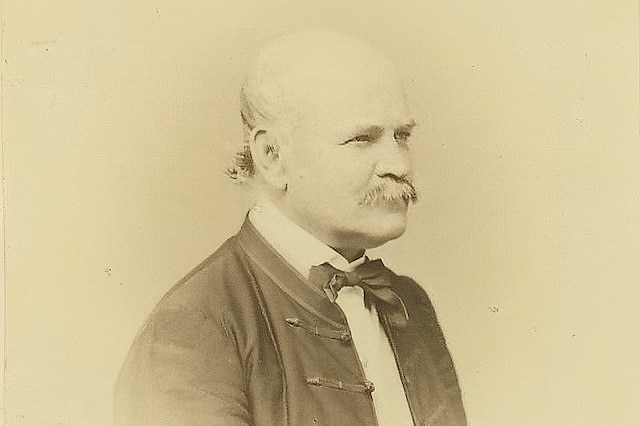
Today, Hungarian doctor Ignaz Semmelweis is celebrated as the “savior of mothers” for his groundbreaking discovery that handwashing could prevent childbed fever. But his story isn’t just one of triumph—it’s also a tragic tale of how the world rejected a man ahead of his time. Despite his efforts to save lives, Semmelweis ended up locked in an asylum, abused by guards, and left to die from an untreated wound. It’s a stark reminder of how hard it can be to challenge the status quo.
Semmelweis started his career in 1846 as an obstetrical assistant at Vienna General Hospital. The hospital had two maternity wards for poor women, and Semmelweis noticed something alarming: the ward where doctors worked had a maternal death rate five times higher than the one staffed by midwives. The cause? Childbed fever, a deadly infection that was killing mothers shortly after childbirth.
Determined to find the reason, Semmelweis went through every possible explanation. Finally, he realized the key difference: the midwives washed their hands, while the doctors didn’t. Convinced he’d found the solution, Semmelweis ordered his students to start washing their hands before treating patients. The results were incredible—the death rate dropped dramatically. He published his findings, hoping to revolutionize medicine.
But the medical world wasn’t ready to listen. Semmelweis’s idea that doctors’ unclean hands were spreading disease went against everything they believed. Instead of embracing his discovery, his colleagues mocked and criticized him. For years, Semmelweis fought back, lashing out at his critics with growing frustration and anger. He became an outcast, ridiculed and ignored.
The constant rejection took its toll. In 1865, Semmelweis suffered a mental breakdown and was committed to an asylum. Just weeks later, he died from sepsis caused by an untreated wound. His death went largely unnoticed by the medical community he had tried so hard to change.
Semmelweis’s story is both inspiring and heartbreaking. He was a man who saw the truth but was punished for it. Today, we know he was right—handwashing is a cornerstone of modern medicine. But his life reminds us that progress often comes at a cost, and sometimes, the world isn’t ready to listen to those who see the future first.
9.The Woman Who Joined the Army

Hannah Snell’s story is one of those wild, unbelievable tales that makes you wonder how history isn’t full of movies about her. Born in 18th-century Britain, Snell became famous for doing something almost unheard of at the time: disguising herself as a man and joining the military. Her journey is equal parts daring, tragic, and downright fascinating.
It all started in 1745. After her husband abandoned her, Snell decided to take matters into her own hands. She dressed as her brother-in-law, James Gray, and set out to find him. When she discovered he had died, she didn’t go home. Instead, she enlisted in the army under her new male identity. For a while, she managed to keep her secret, but when she spotted an old neighbor who might recognize her, she deserted. Most people would’ve called it quits, but not Hannah. She simply switched to the Royal Marines, likely becoming the first woman ever to serve in this elite branch of the British military.
Her time in the Marines was anything but easy. She sailed to Lisbon and then to India, where she was shot in the groin during battle. To keep her identity hidden, she refused treatment from military doctors and instead turned to a local woman to remove the bullet. Imagine the guts it took to endure that kind of pain while keeping such a huge secret.
Snell served until 1750, then returned home to her sister. Legend has it that she finally revealed her true identity in a pub full of soldiers, probably leaving them utterly stunned. Her story became so famous that she sold it to a London publisher and even received a lifetime pension for her service—a rare honor for anyone, let alone a woman who’d tricked the military.
But life wasn’t all glory for Hannah. In her later years, her mental health declined, and she was committed to the infamous Bedlam asylum, where she died in 1792. It’s a bittersweet ending to an extraordinary life.
Hannah Snell’s story is a reminder of how far people will go to defy expectations and carve out their own path. She broke every rule of her time, faced unimaginable challenges, and left a legacy that still captivates us today. If you’re into tales of courage, rebellion, and a little bit of mystery, Hannah Snell is a name you won’t forget.
8.The Northamptonshire Peasant Poet

Described as England’s finest rural poet, John Clare had an unrivaled knack for writing poetry that vividly depicted the natural beauty of the English countryside.
Born in 1793 in the East Midlands, Clare’s working-class credentials were unimpeachable – he was the son of a farm laborer, who had to work the fields himself from a young age to help support his family. He published his first book, Poems Descriptive of Rural Live and Scenery in 1820, but despite his writing receiving lots of praise, he struggled financially all his life and had to keep working manual labor jobs to make ends meet.
This took a toll on Clare, both physically and mentally, and in 1836 his doctor recommended he stay at High Beech asylum in Essex to recuperate. He spent five years there before simply walking out one day and making the 80-mile journey home on foot. However, his respite was brief, and five months later, he was back inside, this time at the Northampton Lunatic Asylum where Clare lived out the last 23 years of his life. He described the place as “the purgatorial hell and French bastille of English liberty, where harmless people are trapped and tortured until they die.”
7.The Man Who Drew Cats

From an English poet, we move on to an English painter – specifically, Louis Wain, a 19th-century London outsider artist who became best known for his pictures of cats. It’s a shame he didn’t live in the Internet age, he would be the most famous artist in the world. Instead, he ended up penniless in a pauper’s asylum.
Unfortunately, his career had a tragic start. Married at 23, Wain’s wife was soon diagnosed with terminal breast cancer. To cheer her up, Wain would draw caricatures of their family cat, Peter. These were meant to be private, but an editor for the Illustrated London News saw them and liked them and commissioned Wain to draw more for his newspaper. Before you knew it, all of London knew Wain as “the man who drew cats.”
Compared to other entries, Louis Wain ended up in an asylum at an advanced age. He was always a bit on the eccentric side, but in his later years, his eccentricity turned to abuse and violence towards his sisters who lived with him. Therefore, in 1924, the 64-year-old Wain was committed to Springfield Hospital in Tooting. He was later moved to nicer accommodations in Bethlem Hospital following a public campaign backed by the Prime Minister at the time, Ramsay MacDonald, and he was allowed to quietly work on his art for the rest of his life.
6.The Murderous Mathematician

André Bloch is a name that carries a strange duality in the world of mathematics. On one hand, he’s celebrated for his contributions to complex analysis, with a theorem and a mathematical constant named after him. On the other, his life is shadowed by a chilling crime that landed him in a mental asylum for over three decades. It’s a story that’s as fascinating as it is unsettling.
Born in 1893 in Besançon, France, Bloch and his brother Georges were drafted into the army during World War I. Both were injured in service—Georges lost an eye and was discharged, while André was sent home to recover. But André never returned to the front. Instead, while on leave, he committed a horrifying act: he killed his brother, his aunt, and his uncle. The motive? Bloch claimed it was eugenics. He believed mental illness ran in his family, particularly on his mother’s side, and saw his actions as a way to “cleanse” the bloodline. He even expressed regret that he hadn’t finished the job.
After the murders, Bloch was committed to the Charenton asylum near Paris, where he spent the next 31 years. Remarkably, it was here, within the walls of the asylum, that he produced his groundbreaking mathematical work. His ability to focus on complex theories while living in such circumstances is both impressive and eerie. When his psychiatrist called his actions terrifying, Bloch responded coldly, “You are using emotional language. Above all, there is mathematics and its laws.”
Bloch’s story is a haunting reminder of how brilliance and darkness can coexist in the same person. His contributions to mathematics are undeniable, but they’re forever tied to the tragic and violent events of his life. It’s a tale that makes you question the fine line between genius and madness, and how one man’s mind could harbor both. If you’re into stories that blur the lines between brilliance and tragedy, André Bloch’s life is one you won’t soon forget.
5.The Minister of Murder
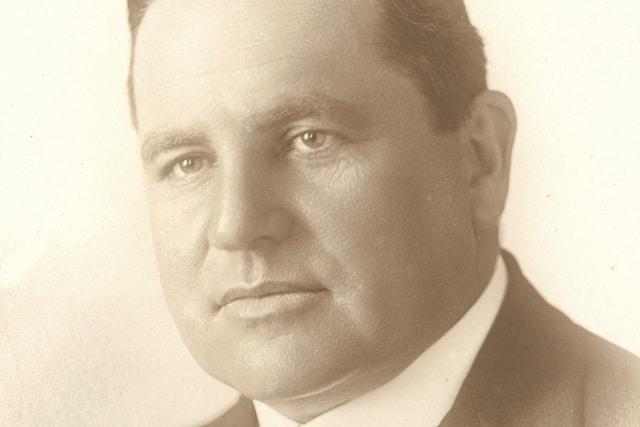
Born in England in 1880, Thomas Ley moved to Australia in 1886 where he later served as the Minister of Justice for New South Wales and then a Member of Parliament. His career, however, was fraught with controversies and accusations, the most serious of which was the fact that several of his opponents and detractors ended up dead under mysterious circumstances.
Eventually, the dark clouds surrounding Ley cost him his political career, so he moved back to England with his mistress, Maggie Brook, where he continued his dubious shenanigans. These included some shady real estate deals, promoting a bogus sweepstakes, and acting as a black market dealer during World War II.
Thomas Ley reached the end of the line in 1947 when he was accused, charged, and convicted in a sensational crime dubbed by the British press as the “Chalkpit murder.” He arranged the death of a man named John McBain Mudie whom he believed was having an affair with Brook. He was due to hang but had his sentence commuted to life in prison at the Broadmoor Asylum for the Criminally Insane. Ultimately, it didn’t matter, since Ley had a cerebral hemorrhage and died soon after being imprisoned.
4.The Mad Archer
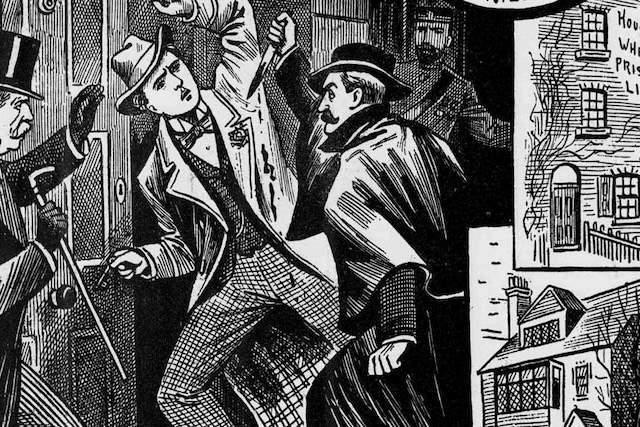
Despite what the title might suggest, this story is not about a deranged hunter, but rather a man named Archer – specifically, a 19th-century Scottish actor named Richard Archer Prince. Born near Dundee in 1858, Prince began working in theater from an early age and around 1875 moved to London to make it big.
He didn’t. He mostly had bit parts and always struggled financially, sometimes having to rely on a charity known as the Actor’s Benevolent Fund for assistance. He began drinking heavily and exhibiting odd behavior, which earned him the moniker of “the Mad Archer” from his fellow thespians.
At the exact opposite end of the spectrum sat William Terriss. He was one of the most popular actors of his day. He knew Prince and occasionally tried to find him work, but this did not stop the latter from resenting him due to his success. Eventually, Prince was denied assistance from the Actor’s Benevolent Fund and he, somehow, got it into his head that this was Terriss’s doing. He got his revenge one night by waiting for Terriss outside the Adelphi Theater and stabbing him to death when he arrived.
Prince showed no remorse for his crime. He was obviously found guilty, but judged insane and was sent to Broadmoor. He spent the next 40 years of his life there and became involved with the local entertainment, finally finding a captive audience.
3.America’s First Supermodel
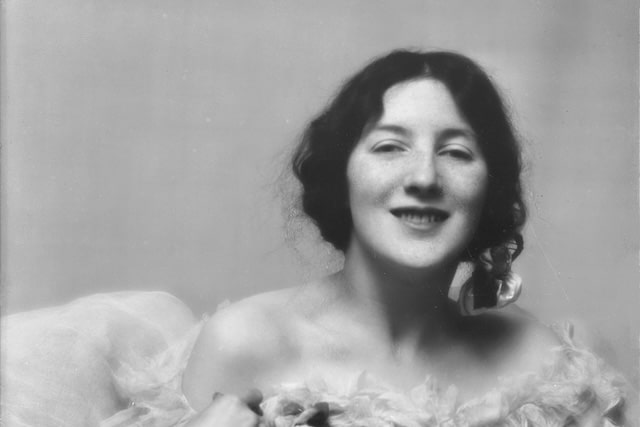
Audrey Munson was once the face of America—literally. Known as the “American Venus,” “Miss Manhattan,” and other glamorous titles, she was the muse behind some of the most iconic statues and coins in U.S. history. Her likeness graces the Walking Liberty Half Dollar, the Manhattan Bridge, the Pulitzer Fountain, and even Sleepy Hollow Cemetery. But despite her fame, Munson’s life took a tragic turn, and she died forgotten in a mental asylum, buried in an unmarked grave.
Her downfall began in 1919. Munson and her mother lived in a boarding house owned by a doctor named Walter Wilkins, who became dangerously obsessed with Audrey. His infatuation spiraled so out of control that he murdered his wife, believing it would clear the way for him and Audrey to be together. While Munson had no involvement in the crime, the scandal destroyed her career. Overnight, the once-sought-after model found herself unemployable. She and her mother moved to Syracuse, where they struggled to make ends meet. Audrey’s mother even resorted to selling kitchen utensils door-to-door to survive.
The drastic shift from fame to poverty took a toll on Munson. In 1922, she attempted suicide, a desperate act that marked the beginning of her mental decline. Over the years, her instability grew worse. On her 40th birthday, her mother made the heartbreaking decision to have her committed to the St. Lawrence State Hospital for the Insane. She was later moved to a nursing home, but Audrey kept running away, forcing her return to the mental institution. She spent the rest of her life there, passing away in 1996 at the age of 104.
Audrey Munson’s story is a haunting reminder of how quickly fortune can change. From being the embodiment of beauty and art to dying in obscurity, her life is a mix of glamour, scandal, and tragedy. It’s a tale that makes you wonder how someone so celebrated could end up so forgotten. If you’re into stories of rise and fall, fame and obscurity, Audrey Munson’s life is one that will stay with you long after you’ve read it.
2.The Marquis de Sade
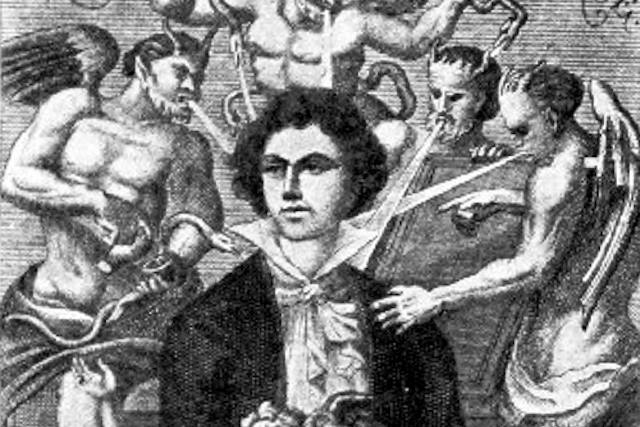
Donatien Alphonse François de Sade might be the most notorious French author in history, although everyone knows him better under the name of the Marquis de Sade. His novels outraged 18th-century France due to their depictions of sex, violence, blasphemy, and sadism, a word which, you guessed it, is named after him.
It seems that the Marquis enjoyed at least some of the topics he wrote about in his own life, which led to his arrest and imprisonment on multiple occasions. Usually, he was let off with a fine or his family used its influence to secure his release following a brief stay in custody.
This worked until it didn’t. Specifically, until the French Revolution which ended the monarchy and brought Napoleon to power. He absolutely loathed de Sade’s work, calling it “abominable” and the writings of “a depraved imagination.” Napoleon had the Marquis arrested again in 1801 and, this time, there was no reprieve. De Sade was diagnosed with “libertine dementia” and committed to an insane asylum for the last 11 years of his life. He spent that time writing and putting on plays. At least, until 1809 when he was sent to solitary confinement, had all pens and paper confiscated, and was denied any more visitors.
1.The Great Composer

Robert Schumann is a name that echoes through the halls of classical music as one of the greatest composers of the Romantic era. Born in 1810 in the Kingdom of Saxony, Schumann showed his musical genius early, starting lessons at just seven years old and composing his own works not long after. By the time he died at 46, he had created nearly 150 pieces, leaving behind a legacy that still moves listeners today. But behind his brilliance was a life marked by struggle, particularly with mental illness.
Schumann’s mental health began to unravel in 1854. Plagued by delusions and fearing he might harm his wife and children, he attempted suicide by jumping off the Rhine Bridge. After this desperate act, he asked to be admitted to an asylum, where he spent the last two years of his life. His death in 1856 left many questions unanswered, and to this day, the cause of his psychosis remains a mystery.
Some say it was exhaustion from overwork. Others argue he suffered from schizophrenia or bipolar disorder, even analyzing his compositions for clues. There’s also the possibility it was hereditary—his mother battled depression, his father had a nervous breakdown, and his sister died by suicide. Even the Nazis weighed in, diagnosing him with vascular dementia to avoid tarnishing his image as a German cultural hero. After all, they couldn’t let their musical icon be remembered as someone with psychiatric issues.
Schumann’s story is a poignant reminder of how creativity and suffering often intertwine. His music continues to inspire, but his life also serves as a testament to the toll mental illness can take, even on the most gifted among us. If you’re fascinated by the lives of artistic geniuses and the shadows that sometimes follow them, Robert Schumann’s tale is one you won’t want to miss.
























